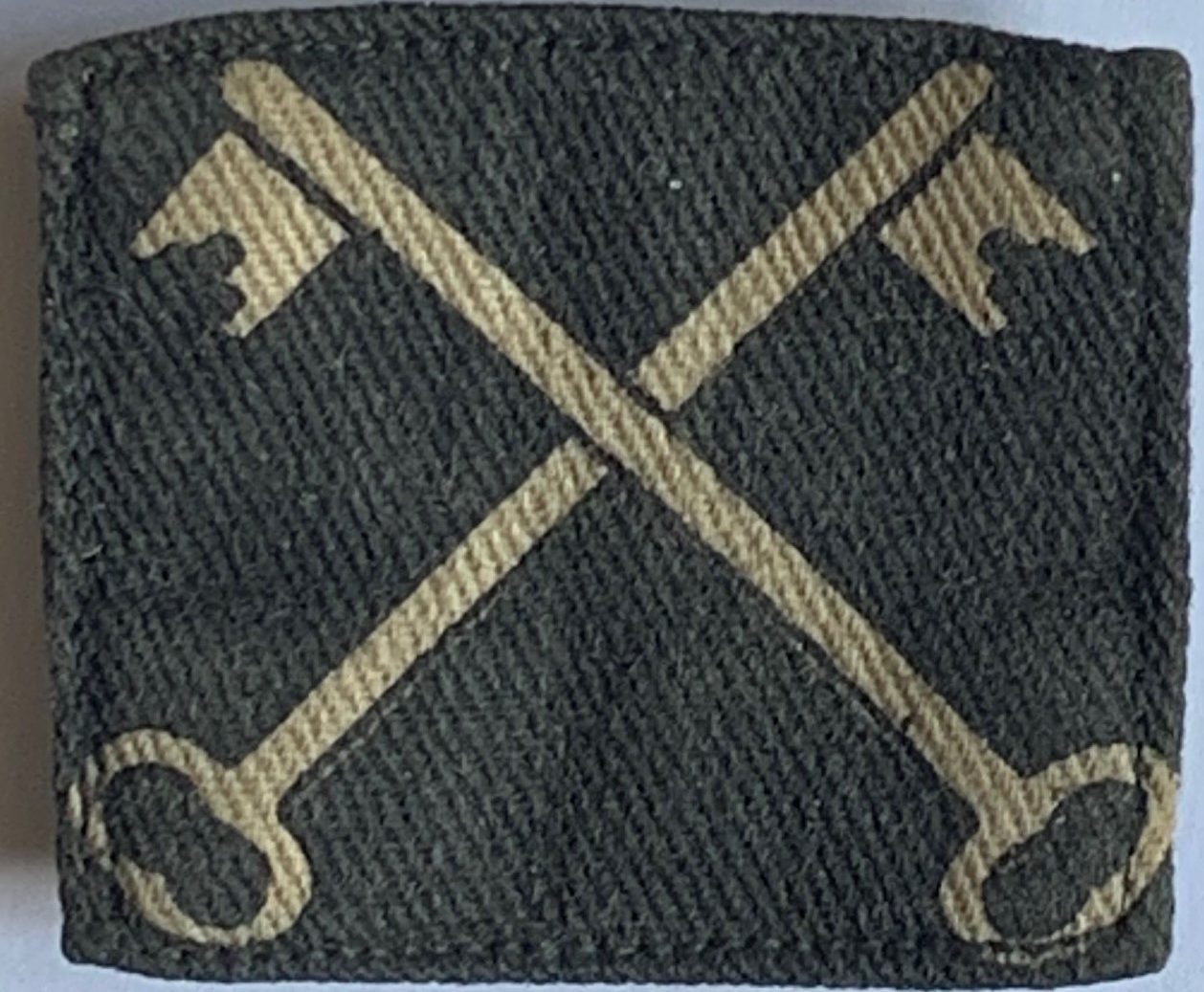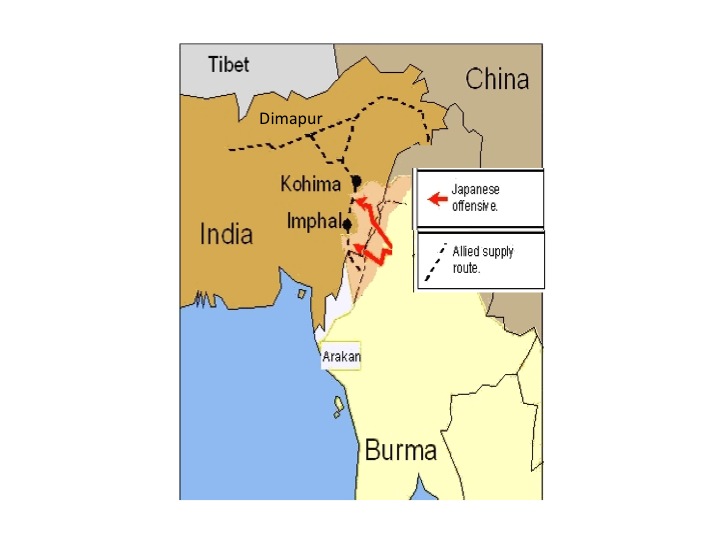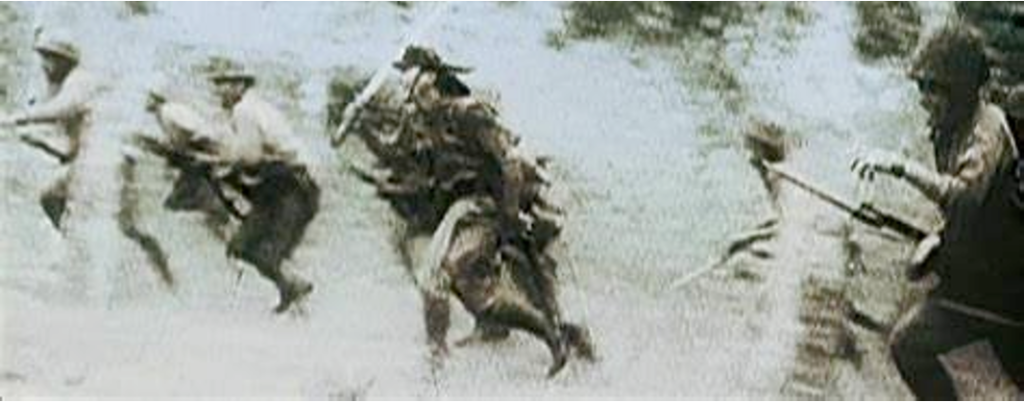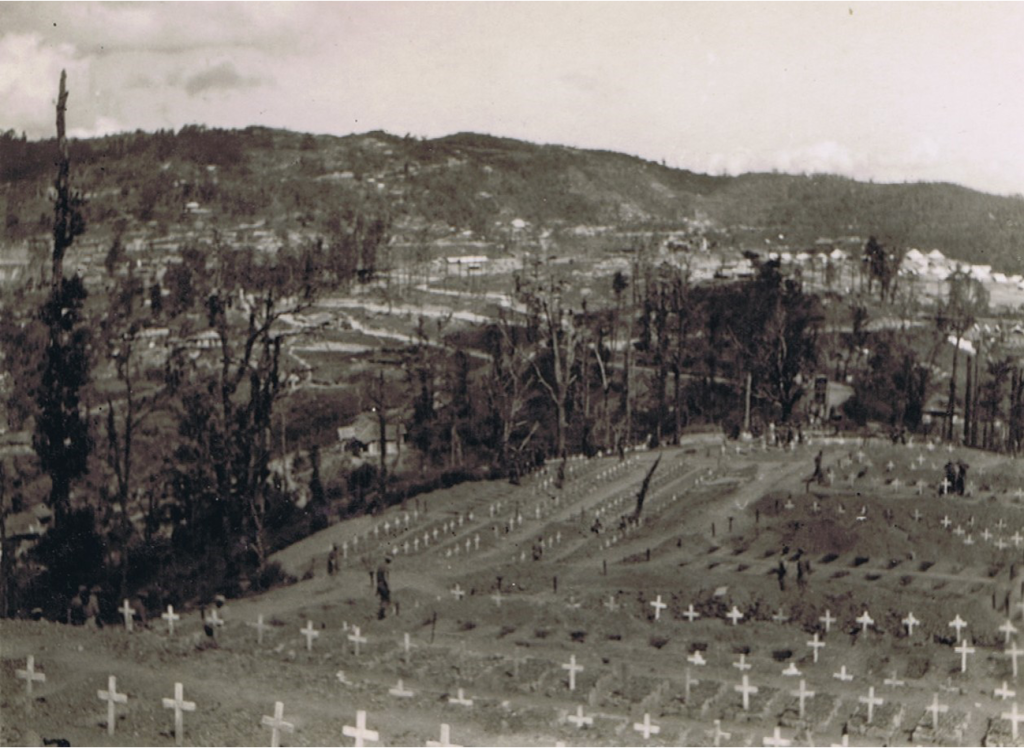Background
The Battle of Kohima broke the Japanese invasion of India, a bold strategic stroke devised by Lieutenant General Renya Mutaguchi. In March 1944, he launched the Japanese 15th Army from Burma, with the primary aim of destroying the British & Indian forces of 4 Corps, assembled at Imphal. Mutaguchi believed that his invasion would trigger an uprising by the Indian population against their colonial oppressors, the British.
Mutaguchi sent two divisions to destroy 4 Corps at Imphal. His third division, the 31st, commanded by Lieutenant General Kotoku Sato, was to take Kohima & cut the road to Imphal from the great supply depot Dimapur, preventing provisions & reinforcements from reaching 4 Corps. Once this was achieved, Mutaguchi planned to seize Dimapur to cut a crucial supply route to China.
Because of widespread civil unrest, Mutaguchi expected the Indian population to rise up against the British, sparking the ‘March on Delhi’.
Kohima was a busy town. There was a bakery, two hospitals, vehicle repairs, a jail & a casualty replacement camp. It was not prepared for the speed & size of the Japanese attack. Just in time, 446 men of the Queen’s Own Royal West Kents were airlifted in to meet the threat, reaching Kohima on April 4th, the same day as the Japanese. They joined Indian troops of the Assam Rifles and Assam Regiment, together with odds & sods of other units. Altogether, the garrison had about 1,500 combatants. They were massively outnumbered by the 15,000 Japanese of Sato’s 31st Division!
The Siege
The Japanese surrounded the Kohima garrison, which was entrenched along a ridge overlooking the road to Imphal. During daylight, the garrison was reduced by sniping & shellfire. At night, they were attacked by waves of screaming infantry. Day-by-day, the defenders were inexorably driven in on their final position, which they dubbed Garrison Hill, situated beside a tennis court, front line of much of the bitterest fighting.
Relief
To meet the emergency, the British 2nd Division was rushed across India by rail. The small Kohima garrison had reached the limit of its endurance, but 2nd Division arrived to relieve them on April 18th. Of the 446 West Kents who arrived on April 4th, 278 were casualties. Over 600 wounded were carried off Kohima ridge. The relieving troops gagged at the stench of excrement & rotting flesh. Lieutenant Bruce Hayllar wrote:
“Oh my God, the stink of those dead bodies! It sticks in your nose & mouth, as if death has partly claimed you.”
The Japanese still held most of Kohima & blocked the road to Imphal. Their positions were very strong, dug deep into commanding hillsides with mutual support. Bitter fighting went on for a further 7 weeks, in which the British received invaluable support from the indigenous Naga people, who had a tradition of head-hunting.
Eventually, deprived of food & ammunition, the valiant Japanese were finally forced to withdraw. Lieutenant General Sato wrote:
“Our swords are broken & our arrows spent. Shedding bitter tears, I now leave Kohima”.
The road to Imphal was re-opened on June 22. The crisis was over & the invasion of India had been defeated.
Aftermath
The Japanese left behind at least 7,000 dead, whilst the British & Indians had around 4,000 casualties.
The Battle of Kohima saw much bitter fighting, with both sides displaying staggering feats of endurance. This & the simultaneous battle at Imphal were decisive in the Burma campaign, leaving the Japanese 15th army shattered & morale soaring amongst the British & Indians.
Learn More
The Kohima Museum in York displays many relics from the Battle of Kohima and other aspects of the Burma Campaign.
Details of the battle and associated actions can be obtained from the following:-
Road of Bones by Fergal Keane. The story of the Kohima battle and the people involved, told in a gripping narrative.
Japan’s Last Bid for Victory: The Invasion of India, 1944 by Robert Lyman. An enthralling account, drawing on interviews with many who were present.
The Siege of Kohima. The Battle for Burma by Robert Street. Compelling personal account of the experiences in 1944 of the author’s father, a runner in the Royal West Kents.
Kohima: The Furthest Battle: The Story of the Japanese Invasion of India in 1944 and the ‘British-Indian Thermopylae’ by Leslie Edwards. Extremely detailed description of the events of the battle.








